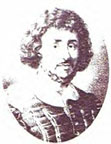Beauties of Claude Lorraine (1825) |
|||
Claude Gellée (1600–1682), called Claude Lorraine after the French region where he was born, spent most of his life and career in Rome and was the leading (and most prolific) figure of the Italian school that first made landscape painting a respectable art form. He influenced contemporaries like Nicolas Poussin and many later artists including Constable, Turner, and the American Hudson River school, as well as "landscape" gardening, especially in Britain, and ultimately the way people looked at nature itself. In the Romantic period, from the late 1770s on, his work was well known through collections such as Beauties of Claude Lorraine [sic]: Twenty-four of His Choicest Landscapes Engraved by Brumley, Lupton, and Others (1825) — itself a selection made from a larger compilation, the three-volume Liber Veritatis, or A Collection of Two Hundred Prints, after the Original Designs of Claude de Lorrain (1777). |
 |
||
| Click here to return to the Topographical Scenes homepage | |||
|---|---|---|---|


















